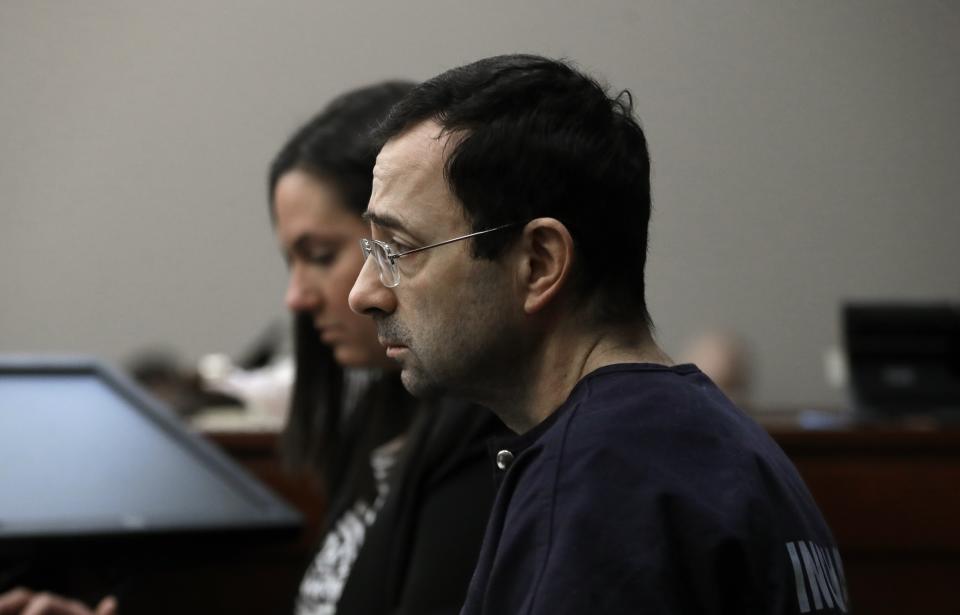MSU hid key details of Nassar investigative report from victim

On Friday, the Lansing State Journal published even more horrid details about MSU’s handling of Larry Nassar’s sexual abuse, this time revolving around his 2014 Title IX investigation.
Amanda Thomashow complained to MSU in 2014 that Nassar had assaulted her during an appointment, after which Nassar was suspended from seeing patients and several investigations were started. One was an investigation by MSU’s Title IX office. At that investigation’s end, a report was delivered to Thomashow with the following conclusion, with text obtained by the Lansing State Journal.
“We cannot find that the conduct was of a sexual nature. Thus, it did not violate the Sexual Harassment Policy. However, we find the claim helpful in that it allows us to examine certain practices at the MSU Sports Medicine Clinic.”
But there was a second report that Thomashow didn’t get to see, and it was different from the first one. That second report was given to Nassar and his superior at MSU, and this is what the “conclusions & recommendations” section contained:
“We cannot find that the conduct was of a sexual nature. Thus, it did not violate the Sexual Harassment Policy. However, we find the claim helpful in that it brought to light some significant problems that the practice will want to address.
“We find that whether medically sound or not, the failure to adequately explain procedures such as these invasive, sensitive procedures, is opening the practice up to liability and is exposing patients to unnecessary trauma based on the possibility of perceived inappropriate sexual misconduct. In addition, we find that the failure to obtain consent from patients prior to the procedure is likewise exposing the practice to liability. If procedures can be performed skin-on-skin or over clothes in the breast or pelvic floor area, it would seem patients should have the choice between the two. Having a resident, nurse or someone in the room during a sensitive procedure protects doctors and provides patients with peace of mind. If ‘touching is what DO’s do’ and that is not commonly known, perhaps the practice will want to consider a disclaimer or information sheet with that information provided to the patient up front.”
The differences are staggering. Thomashow didn’t get to see a tremendous amount, including the part that said that Nassar’s behavior could expose MSU to significant lawsuits, but that he didn’t do anything wrong and the fault was hers for not understanding the “procedure.”
That Thomashow didn’t get to see the full results of the investigation into an assault that happened to her just continues to demonstrate how little MSU really cared about protecting their female students and the patients that went to the sports medicine clinic. But the investigation itself, and the recommendations that came from it, also demonstrate a massive institutional failure on the part of the Title IX office as well.
When the complaint was originally filed and the Title IX investigation started, Nassar himself was asked to recommend people for the Title IX investigators to speak to about the complaint. Nassar suggested several people he had close ties to, including Dr. Brooke Lemmen, who has been described as Nassar’s “protégé.” In addition to Lemmen, the Title IX investigators interviewed three other people that Nassar suggested. When Lemmen was interviewed, she told the investigators that Nassar’s treatments were legitimate and there was nothing sexual about them.
The investigators ended up agreeing with Lemmen, saying that patients weren’t able to grasp the “nuanced difference” between sexual assault and medical treatment, which led to the recommendations detailed above — recommendations that were hid from Thomashow. Lemmen later removed boxes of confidential patient treatment files from MSU’s Sports Medicine Clinic after Nassar asked her to, and then resigned before MSU had the chance to fire her.
We know now that Nassar was not performing any kind of legitimate treatment on some of his patients. When presented with patient complaints, the Title IX investigator didn’t recommend that the procedure no longer be performed because patients were saying they felt violated. The investigator simply took the word of Nassar’s friends and close colleagues, and recommended that the procedures be more thoroughly explained.
And in the end, Nassar’s superior at MSU told police that he hadn’t tried to enforce those recommendations, because Nassar had been cleared in the Title IX investigation. Nassar was allowed to “treat” patients again, which he did for over two years until MSU fired him.
– – – – – –
Liz Roscher is a writer for Big League Stew on Yahoo Sports. Have a tip? Email her at lizroscher@yahoo.com or follow her on twitter! Follow @lizroscher


